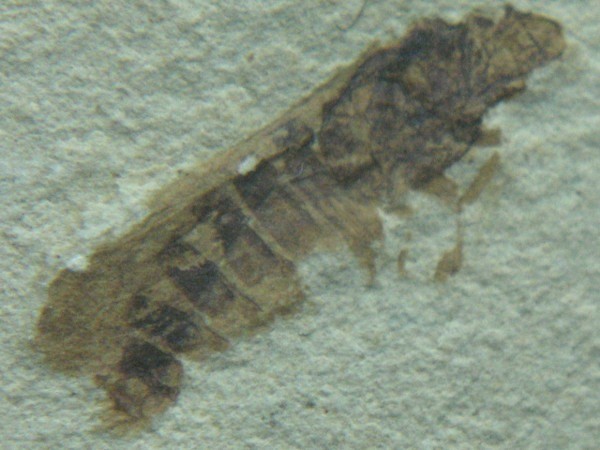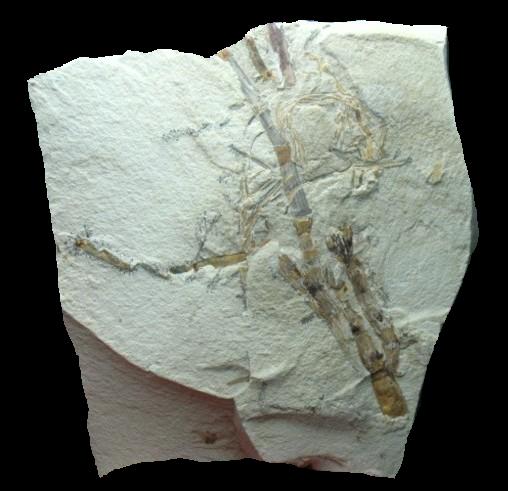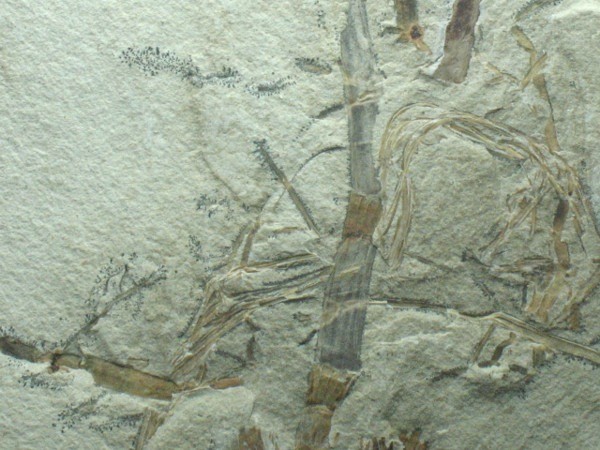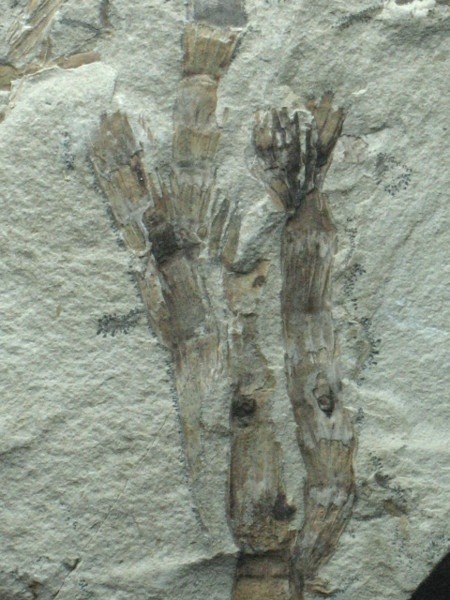Daohugou Biota

Photographed by Michael P. Klimetz
Hagiphasma paradoxa
[Complete Insect in Siltstone]
Late Jurassic
Ningcheng
Inner Mongolia
CHINA

Photographed by Michael P. Klimetz
Hagiphasma paradoxa
[Complete Insect in Siltstone]
Late Jurassic
Ningcheng
Inner Mongolia
CHINA

Photographed by Michael P. Klimetz
Equisetites longevaginatus
[Plant in Siltstone]
Late Jurassic
Ningcheng
Inner Mongolia
CHINA

Photographed by Michael P. Klimetz
Equisetites longevaginatus
[Plant in Siltstone]
Late Jurassic
Ningcheng
Inner Mongolia
CHINA

Photographed by Michael P. Klimetz
Equisetites longevaginatus
[Plant in Siltstone]
Late Jurassic
Ningcheng
Inner Mongolia
CHINA

Photographed by Michael P. Klimetz
Beipiaoa spinosa
[Fruit Structure in Siltstone]
Late Jurassic
Ningcheng
Inner Mongolia
CHINA
The Daohugou Beds are a series of fossil-bearing rock deposits located in northeastern China, south of Chifeng, Inner Mongolia, near the village of Daohugou in Ningcheng county. The rocks are principally grey, finely-bedded, lacustrine sandy mudstones mixed with tuffaceous mudstones. They date from between the late Middle Jurassic (168 mybp) and early Late Jurassic Period (164-152 mybp). The geology of the Daohugou Beds is complex, as it is an assemblage of rocks of different ages that have been superposed by folding and by volcanic activity. Hence, the age of the Daohugou Beds has not been deninitively established. Beautifully preserved fossils of dinosaurs, pterosaurs, salamanders, insects and other invertebrates, as well as conifers, ginkgoes, cycads, horsetails, and ferns, and even the remains of the earliest known gliding mammal (Volaticotherium) and an aquatic protomammal (Castorocauda) have been discovered in these rocks. These organisms are hence known as members of the Daohugou Biota. The tuffaceous composition of some rock layers suggest that this was adjacent to an area of active volcanism, occasionally experiencing heavy ashfalls from eruptions, dominated by mountain streams and deep lakes surrounded by forests of gymnosperm trees. The forests of the Daohugou biota grew in a humid, warm/temperate climate dominated by gymnosperms including Ginkoites, Ginkgo, Baiera, Czekanowskia, and Phoenicopsis. Conifers such as Pityophyllum, Rhipidiocladus, Elatocladus, Schizolepis, and Podozamites were also present. Additionally Lycopsids such as Lycopodites and Sellaginellities, horsetails (Sphenopsids) including Equisetites, the cycad Anomozamites, and ferns (Filicopsida) like Todites and Coniopteris were additional floral elements.
Photographed by Michael P. Klimetz
Dragonfly and Ostracods
[In Siltstone]
Middle Jurassic
Daohugou Village
Chiufeng
Inner Mongolia
CHINA
Photographed by Michael P. Klimetz
Dragonfly
[In Siltstone]
Middle Jurassic
Daohugou Village
Chiufeng
Inner Mongolia
CHINA